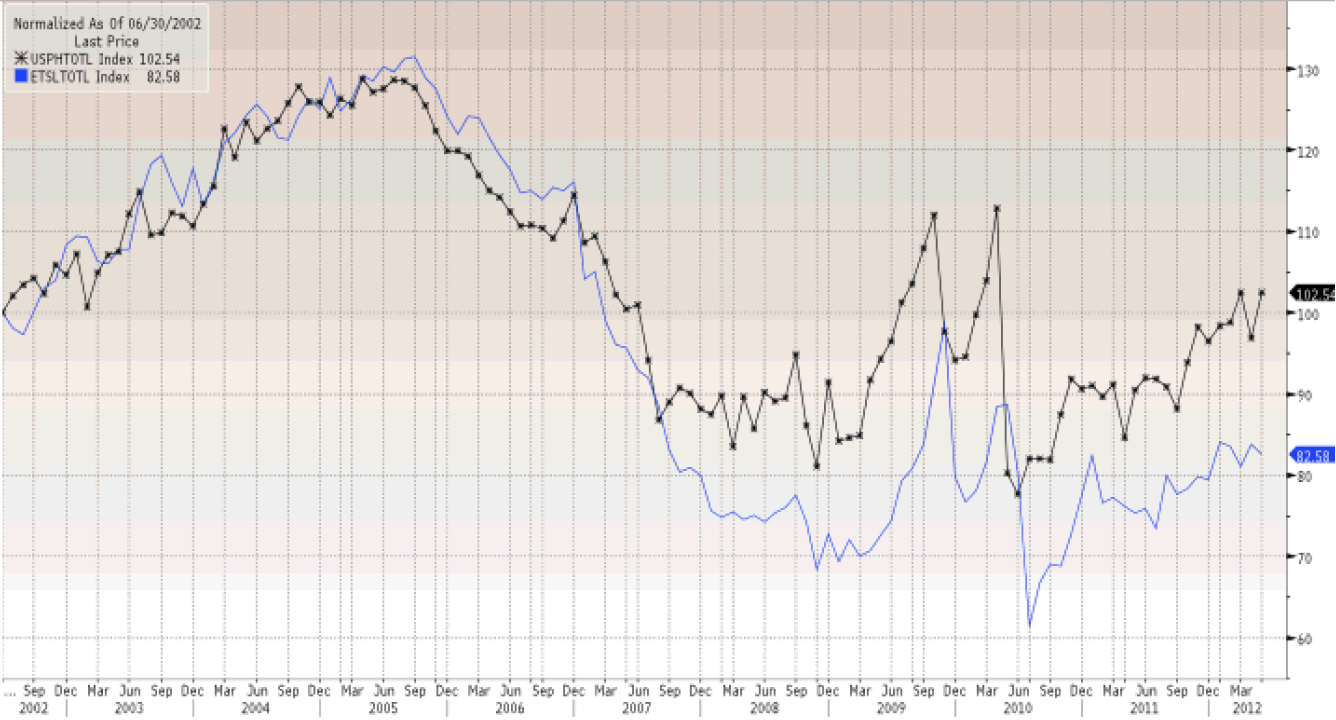Pending Home Sales Index versus Existing Home Sales

Lots of people got excited about this week’s Pending Home Sales Index.
I have been arguing that the strong housing numbers of late are being misinterpreted and that excitement was misplaced. We still have a very slow recovery, and no turnaround.
I am speaking against my book, as we own several RRE properties that would increase in value if the housing market recovers.
Consider: The number of home buyers signing contracts to buy existing homes jumped nearly six percent in May. Bill King notes that “seasonal buying surge was particularly strong out west where the NAR’s Pending Home Sales Index jumped 14.5%. Investors are driving the market out West, racing to buy distressed properties and take advantage of today’s very hot rental market (according to CNBC).”
But also consider: The NAR was embarrassed when they were forced to revise years of housing data — they had been using bad data based on a very old baseline. They went many years without so much as checking their data. As Constantine von Hoffman of CBS commented: “Commerce Department revises its number quarterly and clearly says that these are preliminary – not definitive – numbers. It turns out the NAR hasn’t double checked its math in five years.” (How ridiculous is THAT?)
Let’s review what we do know about the NAR:
-In the 2000s, they overstated Existing Home Sales by 14%;
-Their Housing Affordability Index is worthless;
-They make absurd marketing claims (i.e., its always a good time to Buy or Sell a house).
So, they engage in relentless spin, and cook their books. What does that mean about their Pending Home Sales Index?
As King points out, “Pending Homes Sales used to correlate closely with Existing Home Sales. Since mid-2007, when the financial crises began, Pending Sales greatly exceed Existing Sales. Cancellation rates remain high, so pending home sales aren’t always reliable.”
Distressed properties in various neighborhoods make appraisals challenging. Lots of potential home buyers fail to qualify for mortgages. These events occur AFTER the contract is signed, but before the closing. They are reflected in the PHSI, and are the primary reasons for the huge gap between PHSI and EHS.
And the chart above clearly demonstrates all that. King observes “Pending Home Sales are 25% higher than Existing Home Sales – cancellations remain high when faulty seasonal adjustments and record warm weather skewed economic statistics to the upside in early 2012.”
~~~
I got your housing recovery right here . . .
Source:
The King Report
Issue 4289
June 28, 2012


What's been said:
Discussions found on the web: